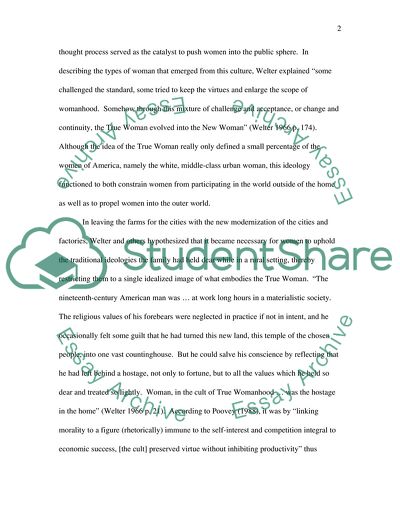Cite this document
((History/Women's Studies) Analyze the cult of true womanhood in Essay, n.d.)
(History/Women's Studies) Analyze the cult of true womanhood in Essay. https://studentshare.org/culture/1703374-historywomens-studies-analyze-the-cult-of-true-womanhood-in-mid-ninteenth-century-america-did-this-ideology-apply-to-different-kinds-of-women-to-what
(History/Women's Studies) Analyze the cult of true womanhood in Essay. https://studentshare.org/culture/1703374-historywomens-studies-analyze-the-cult-of-true-womanhood-in-mid-ninteenth-century-america-did-this-ideology-apply-to-different-kinds-of-women-to-what
((History/Women'S Studies) Analyze the Cult of True Womanhood in Essay)
(History/Women'S Studies) Analyze the Cult of True Womanhood in Essay. https://studentshare.org/culture/1703374-historywomens-studies-analyze-the-cult-of-true-womanhood-in-mid-ninteenth-century-america-did-this-ideology-apply-to-different-kinds-of-women-to-what.
(History/Women'S Studies) Analyze the Cult of True Womanhood in Essay. https://studentshare.org/culture/1703374-historywomens-studies-analyze-the-cult-of-true-womanhood-in-mid-ninteenth-century-america-did-this-ideology-apply-to-different-kinds-of-women-to-what.
“(History/Women'S Studies) Analyze the Cult of True Womanhood in Essay”. https://studentshare.org/culture/1703374-historywomens-studies-analyze-the-cult-of-true-womanhood-in-mid-ninteenth-century-america-did-this-ideology-apply-to-different-kinds-of-women-to-what.


